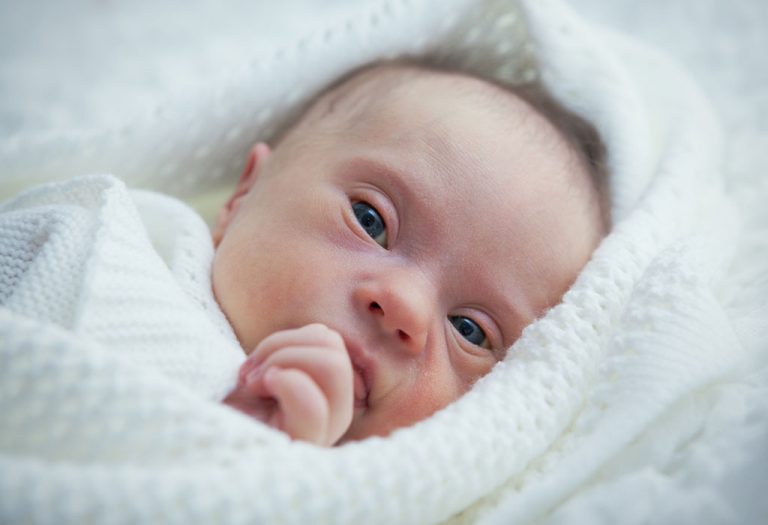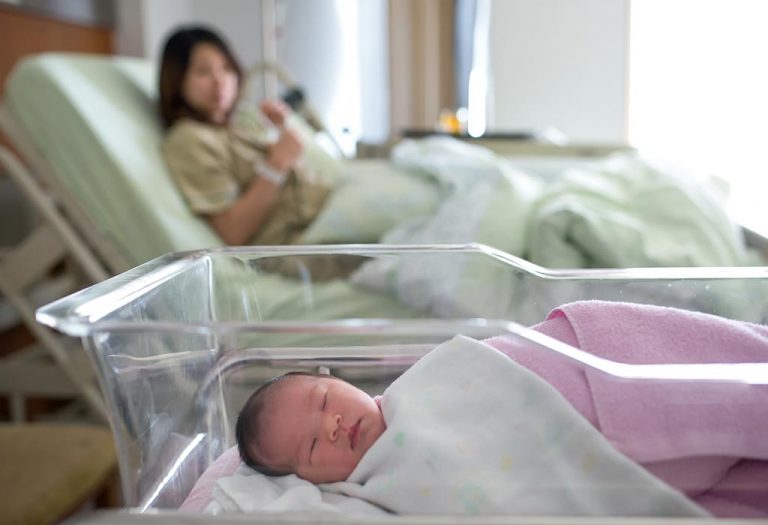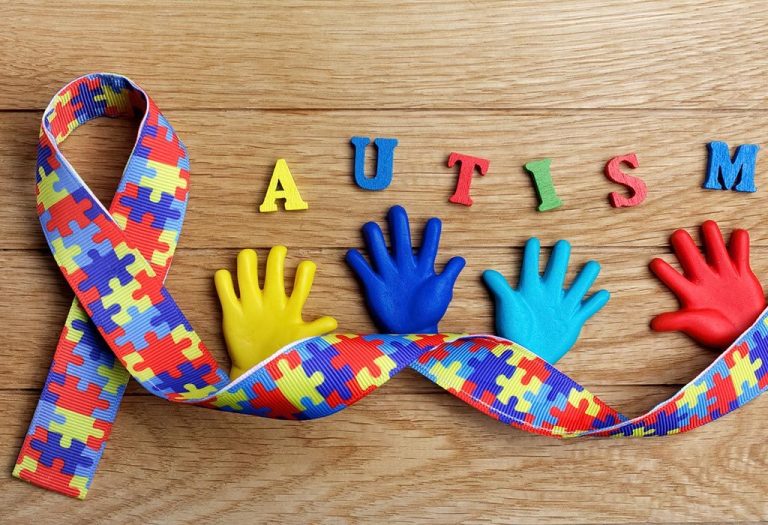Positive Coombs Test in Newborn – Do You Need to Worry?

The nine months of pregnancy, followed by labour and delivery, are challenging, but they are nothing compared to being a mother. Taking care of a baby and ensuring that he stays healthy and happy becomes the primary goal of a mother’s life. And if your newborn baby gets detected positive for the Coombs test, it will add to the existing worries and might leave you exhausted while you help your baby recover. The human body is complex, so many medical complications can affect your newborn. But if you don’t let panic take over, you can deal with it. Read on to learn more about Coombs positive newborn babies.
What Is Coombs Test?
Our immune system produces a protein in the form of antibodies, which helps in protecting our bodies from different infections and ailments. However, sometimes these antibodies work against the body and kill the red blood cells. Hence, your doctor may advise you to undergo an antibody screening test during pregnancy to check if your antibodies are attacking the red blood cells in your body. If the doctor suspects that you have low red blood cell count, he may suggest a blood test known as the Coombs test. This test is further classified into Direct Coombs Test and Indirect Coombs Test.
What Are the Types of Coombs Tests?
There are two types of Coombs tests commonly performed in clinical settings:
1. Direct Coombs Test (also known as Direct Antiglobulin Test, DAT)
The Direct Coombs test is used to detect antibodies that are already attached to the surface of red blood cells. In this test, a small blood sample is collected and treated with antibodies that bind to human antibodies. If the antibodies are present on the red blood cells, they will bind to the added antibodies, forming visible clumps or agglutination. This indicates a positive test result, suggesting the presence of antibodies coating the red blood cells.
2. Indirect Coombs Test (also known as Indirect Antiglobulin Test, IAT)
The Indirect Coombs test is performed to detect antibodies circulating in the bloodstream that can potentially destroy red blood cells. This test involves two steps. First, the patient’s blood sample is collected and mixed with known red blood cell antibodies in the laboratory. If these antibodies are present in the patient’s blood, they will bind to the added antibodies. In the second step, a separate sample of red blood cells with the potential to cause an immune reaction is added to the mixture. Agglutination will occur if the patient’s antibodies bind to these cells, indicating a positive result. Additionally, it is employed in prenatal testing to look for problems with Rh compatibility in expectant mothers. Mothers with Rh-negative blood types should receive an injection of Rh immunoglobulin during pregnancy to prevent difficulties associated with Rh incompatibility in subsequent pregnancies.
Why Does Baby Go Under Coombs Test?
Babies undergo the Coombs test to assess their risk of developing hemolytic disease of the newborn (HDN). Hemolytic disease of the newborn, also known as erythroblastosis fetalis, occurs when a mother’s immune system produces antibodies that can cross the placenta and attack the red blood cells of the developing foetus.
The Coombs test, specifically the Indirect Coombs test, is performed to detect the presence of these antibodies in the baby’s blood. A small sample of the baby’s blood is collected and mixed with red blood cell antibodies in a laboratory setting. If the baby’s blood contains antibodies that react with the known antibodies, it indicates sensitisation to maternal antibodies and a potential risk for HDN.
By identifying the presence of maternal antibodies in the baby’s blood, the Coombs test helps healthcare professionals evaluate the need for further monitoring and intervention. If the test results are positive, additional assessments, treatments, or interventions may be required to prevent or manage complications associated with HDN. This could include close monitoring of the baby’s bilirubin levels, blood transfusions, or other necessary medical interventions to support the baby’s well-being.
What Does a Positive Coombs Test Mean in a Newborn Baby?
If your baby undergoes a Coombs test and the test result is positive, it may indicate that there are chances that the mother’s blood got mixed up with the baby’s blood. This may occur if there is a disparity in the Rh factor of the blood of the mother and the baby. If the mother is Rh-negative and the baby is Rh-positive or vice versa, certain complications may arise if the blood gets mixed up.
To rule out the presence of any mixed-up blood, the Coombs test may be performed on newborn babies by taking blood from the umbilical cord (just after birth) or directly from the baby.
What Causes a Coombs Test to Turn Positive in a Newborn?
The main causes that may reflect a positive Coombs test include the following:
- If the mother and baby have separate blood groups, the mother’s blood sees the baby’s blood as an alien element in the bloodstream and thus produces antibodies against it to kill it. These antibodies may get passed in the baby’s blood and show a positive result in a DAT or direct antiglobulin test.
- The coombs tests may show positive results when an Rh-negative mother gets Rho(D) immune globulin shot and the traces of which may get passed on to the baby’s blood.
What Problems Can Coombs Positive Babies Face?
If your baby is adjudged Coombs positive, he may suffer from either of the following issues:
1. Anaemia
Anaemia is a condition that may occur when there are fewer red blood cells in the body than the required amount. Coombs positive babies may have a reduced red blood cell count in their body, which can make the baby sluggish, lethargic, sleepy, feed poorly and many other complications. Such babies may sometimes require nutrition through an IV. It is not necessary that coombs positive babies will be anaemic; however, it may increase their chances of having anaemia.
2. Jaundice
Though most newborns have certain degrees of jaundice that subsides on its own in most cases, a coombs positive baby may be at a higher risk of developing jaundice. This condition increases the bilirubin levels in the baby’s body, and higher levels of bilirubin may put your baby at risk of experiencing brain damage and other health complications.

How to Take Care of a Coombs Positive Baby?
Babies are delicate; if your baby is Coombs positive, he requires extra care. Here’s how you can take care of him:
- You must pay heed to breastfeed the coombs positive newborn because breast milk is loaded with antibodies that may help your baby fight the symptoms of jaundice.
- The doctors and other medical teams may keep your baby under observation and monitor your baby’s progress closely.
- Your baby may undergo regular tests to monitor his anaemia and jaundice.
- If your baby suffers from severe jaundice, your doctor may advise phototherapy. Phototherapy is a procedure that requires your baby to be placed under a special light bulb that may help in breaking down the bilirubin and thus curing the symptoms of jaundice.
- Sometimes your baby may suffer from severe anaemia or jaundice, which may require extensive medical procedures and treatments. In case such a situation arises, you may also be told about the procedures and their implications.
Are There Any Long-Term Complications for Coombs Positive Infants?
As soon as you deliver your baby, no more mixing of blood may happen. Also, as per the severity of your baby’s condition, the doctor will keep your baby under observation and offer the required treatment. Slowly and gradually, your baby’s blood may eliminate the alien blood and start making new blood cells. In most cases, coombs disease in newborns does not cause long-term complications.
What Happens If the Coombs Test Is Negative?
If the Coombs test is negative, it indicates no detectable antibodies bound to the baby’s red blood cells. This result suggests that the baby is not at any immediate risk of hemolytic disease of the newborn (HDN) caused by maternal antibodies.
A negative Coombs test means that the baby has not been sensitised to maternal antibodies that can potentially attack their red blood cells. It is reassuring as it indicates a lower likelihood of HDN development. However, it’s important to note that a negative Coombs test does not completely rule out the possibility of future antibody-mediated complications. It is still possible for sensitisation to occur later in the baby’s life.
In cases where the Coombs test is negative, healthcare professionals may continue to monitor the baby’s health and closely observe for any signs or symptoms of HDN. They may also conduct additional tests or screenings if other risk factors exist.
It’s important to remember that interpreting the Coombs test and subsequent management depends on the clinical situation and the healthcare provider’s judgment. The test results are just one piece of information that helps guide medical decision-making regarding the baby’s care and monitoring.
When Can a Coombs Positive Newborn Go Home?
You can take a coombs positive newborn home at the usual time. But you must visit the hospital for a checkup in a few days to know whether your baby is recovering well. However, if you notice any changes in your baby’s complexion or if your baby’s face starts looking paler, this could mean that his anaemia or jaundice may become severe. In such cases, your baby may be monitored closely, or you may be required to stay in the hospital if your baby’s condition becomes more critical.
FAQs
1. What Is the Duration of Positive Coombs Test Results?
The duration of positive Coombs test results can vary depending on the underlying condition and individual circumstances. In some cases, the test may remain positive for an extended period; in others, it may quickly become negative. It is essential to consult with a healthcare professional who can provide specific information based on the medical situation.
2. What Per Cent of Infants Are Coombs Positive?
The percentage of infants who test positive on the Coombs test, specifically the Direct or Indirect Coombs test, can vary depending on factors such as the population being studied and the specific condition being evaluated. Positive Coombs test results in infants can range from a few per cent to up to 10% or more in specific populations. Additionally, the test is useful for identifying foreign antibodies that may cause blood diseases, including hemolysis.
Many medical complications may affect the health of a newborn baby. It can be overwhelming for the parents; however, you must trust your doctor and work as a team for the speedy recovery of your baby. Most coombs-positive babies may not exhibit any severe complications and thus can be effectively managed by proper care and medical treatment.
References/Resources:
1. Direct Coombs Test (DCT); NHS; https://www.wsh.nhs.uk/CMS-Documents/Patient-leaflets/PaediatricDepartment/6382-1-Direct-Coombs-Test-DCT.pdf
2. Direct Coomb’s Test; Stanford Medicine; https://med.stanford.edu/newborns/professional-education/jaundice-and-phototherapy/the-coombs–test.html.
3. Coombs Test; University of Michigan Health; https://www.uofmhealth.org/health-library/hw44015
4. Coombs’ Test; Johns Hopkins Medicine https://www.hopkinslupus.org/lupus-tests/clinical-tests/coombs-test/
5. The Rh Factor: How It Can Affect Your Pregnancy; ACOG; https://www.acog.org/womens-health/faqs/the-rh-factor-how-it-can-affect-your-pregnanc
6. Coombs test; Mount Sinai; https://www.mountsinai.org/health-library/tests/coombs-test
Also Read:
Newborn Hearing Screening Test
Phenylketonuria (PKU) Test for a Newborn
Apgar Score for Newborn’s Health Assessment
Was This Article Helpful?
Parenting is a huge responsibility, for you as a caregiver, but also for us as a parenting content platform. We understand that and take our responsibility of creating credible content seriously. FirstCry Parenting articles are written and published only after extensive research using factually sound references to deliver quality content that is accurate, validated by experts, and completely reliable. To understand how we go about creating content that is credible, read our editorial policy here.























